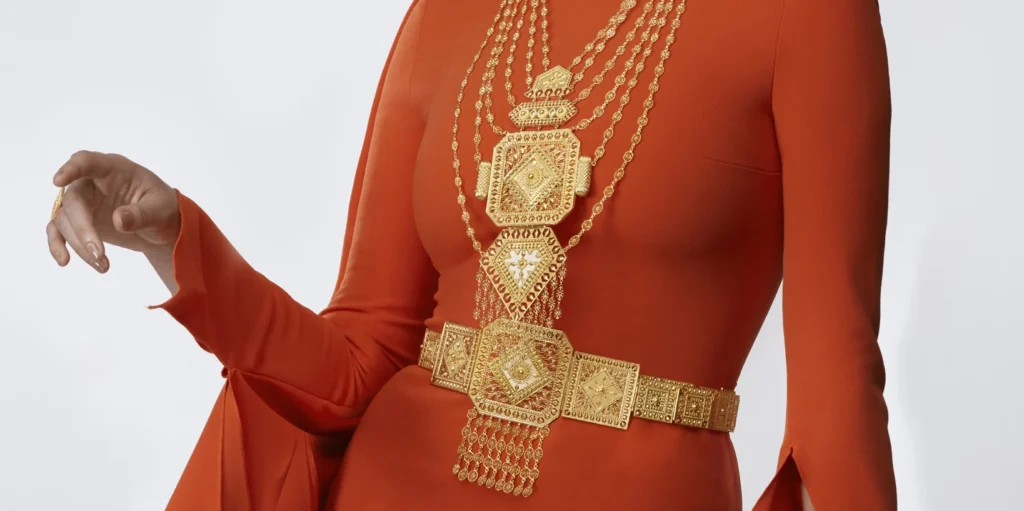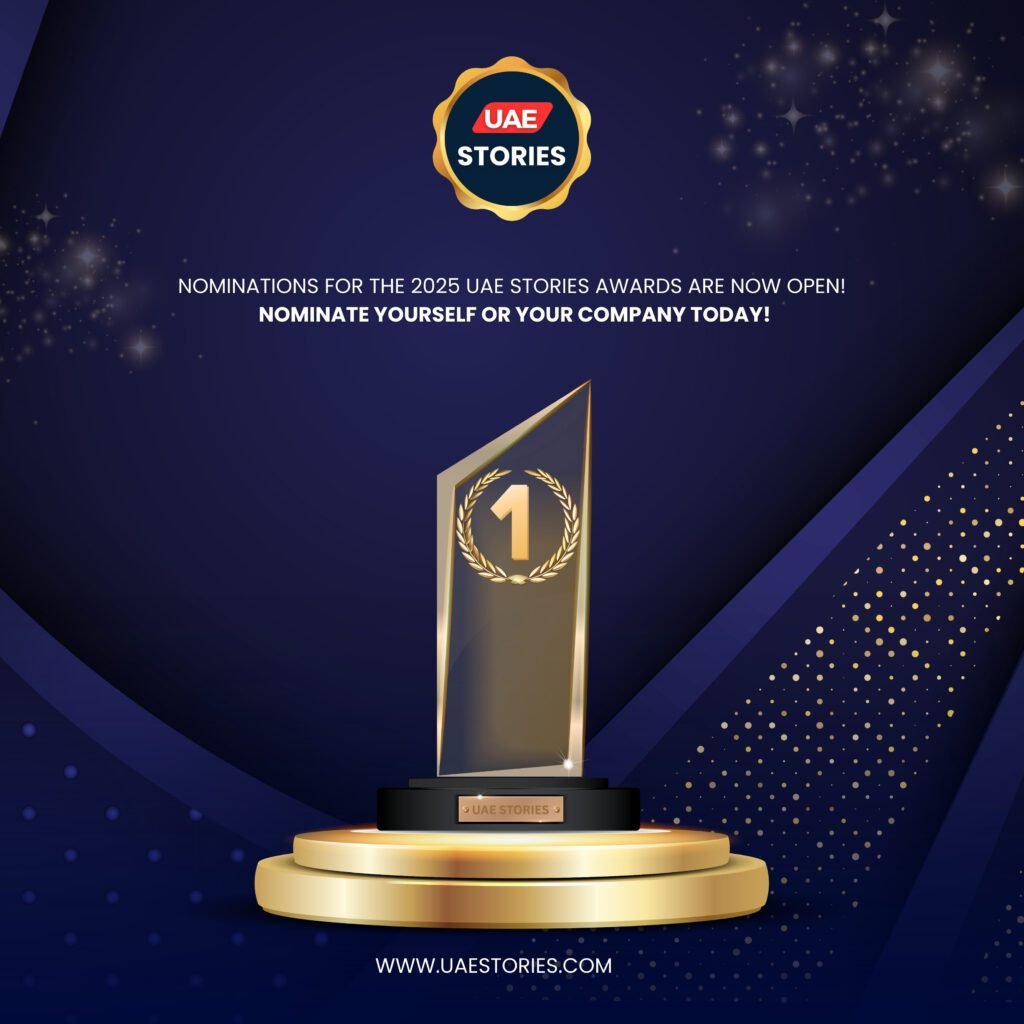Jewelry in the UAE has always been more than adornment—it’s a symbol of heritage, memory, and meaning. Whether it’s the glint of gold at a wedding, the jingle of bangles during Eid, or heirloom pieces passed down through generations, Emirati jewelry tells stories.
But like the country itself, this ancient craft is evolving. Today, a new wave of Emirati designers is breathing life into old motifs, reinterpreting traditional pieces with a contemporary flair that appeals to both locals and international style lovers.
Let’s take a closer look at the most iconic Emirati jewelry traditions—and how they’re being reimagined for a modern world.

The Meaning Behind the Metal
Traditionally, gold has held a place of deep importance in Emirati households. It’s not just a status symbol—it represents wealth, protection, and continuity.
From birth to marriage, Emirati women are gifted gold for every major life event. Gold jewelry has also served as a form of financial security, particularly for women in earlier generations, as it could be melted, traded, or gifted in times of need.

Pieces weren’t just designed to sparkle—they were meant to carry emotion, purpose, and identity.

Iconic Traditional Jewelry Pieces in Emirati Culture
- Murtasha
A heavy gold necklace typically layered for special occasions. It’s often worn with pride at weddings and national festivals, making it one of the most recognizable pieces in a traditional Emirati bride’s ensemble. - Tasi’a
A thick, wide bracelet sometimes worn in pairs, showcasing intricate patterns often inspired by nature or geometry. These bracelets symbolize strength and femininity. - Shnaf (Nose Ring)
Less common today but once a prominent part of a bride’s jewelry, especially in rural areas. It was a sign of beauty and elegance. - Marriyah (Hairpiece)
A head ornament that cascades across the hair or forehead, often seen in wedding looks. It adds a regal feel to the overall attire and reflects the Bedouin aesthetic. - Kholkhal (Anklets)
Worn by both young girls and brides, these anklets often had bells attached to create a soft jingle with movement—a sound once considered charming and alluring. - Fankhars (Rings and Knuckle Rings)
Traditional rings worn on the fingers and sometimes extending onto the hands. They reflect wealth and beauty, especially when worn in multiples.
The Modern Makeover: Designers Making Gold Cool Again
Today’s Emirati designers are turning gold jewelry into fashion-forward statements while staying rooted in their heritage.
- Alia Bin Omair is one of the pioneers of modern Emirati jewelry. Her collections blend poetry, nostalgia, and traditional design with sleek, minimal forms—like pendants inspired by dates, coins, and sand.
- *MKS Jewellery, founded by H.H. Sheikha Mariam bint Khalifa bin Saif Al Nahyan, brings a royal touch to everyday luxury. Her designs mix personal storytelling with fine craftsmanship, focusing on *emotional connection and subtle elegance.
- Areej Jewellery combines traditional Gulf silhouettes with diamonds, enamel work, and unexpected shapes—appealing to a younger audience looking for pieces that are bold, stylish, and full of identity.
These designers have one thing in common: they’re taking symbols that once only lived in a grandmother’s jewelry box and turning them into wearable stories for a global generation.
Gold with Meaning: Jewelry as a Gift and Keepsake
In Emirati culture, jewelry still plays a big role in life milestones:
- Birth of a child: Babies are often gifted gold bangles or pendants with religious inscriptions.
- Coming-of-age: Young girls might receive their first set of real jewelry around Eid or upon graduation.
- *Marriage: The groom’s family traditionally gifts the bride with a *“mahr”, often including heavy gold sets.
But modern Emiratis are reimagining these traditions, sometimes opting for simpler, personalized designs or custom-made sets that reflect their personality rather than societal expectations.

Where Tradition Meets Trends: Styling Jewelry Today
You’ll now see traditional Emirati pieces styled with:
- Western outfits like jeans and blazers
- High-end streetwear
- Layered with chains, charms, and piercings
The result? A mix of old-world elegance with bold new energy. Jewelry is no longer reserved for big events—it’s an everyday expression of self, often styled and shared on social media platforms like Instagram and TikTok.
And thanks to online stores and designer showrooms in Dubai Design District (d3) and Abu Dhabi’s cultural precincts, access to these modern heirlooms has never been easier.
The Global Appeal of Emirati Jewelry
Emirati jewelry designers are now being featured in:
- International fashion shows
- Collaborations with luxury houses
- Pop-ups in London, Paris, and New York
Their ability to blend cultural symbolism with modern aesthetics makes them *stand out in a crowded industry. They’re not just making jewelry—they’re creating *timeless narratives in 18K gold.

Final Sparkle: Why Emirati Jewelry Matters Today
The revival and reinvention of traditional Emirati jewelry is a beautiful reminder that style doesn’t forget its roots. It evolves. It adapts. And most importantly, it continues to tell the stories of a people proud of their past and excited for their future.
Whether it’s a grandmother’s heirloom necklace passed down at a wedding or a sleek gold ring inscribed with a personal message from a modern Emirati brand—these pieces remain powerful symbols of heritage, identity, and love.
So next time you’re looking for something more than just an accessory, think gold. Think legacy. Think Emirati craftsmanship that glows beyond borders.
Follow us on Instagram: UAE STORIES
Inside the Stylish Rise of Thobes and Abayas Redefining UAE Fashion Today















